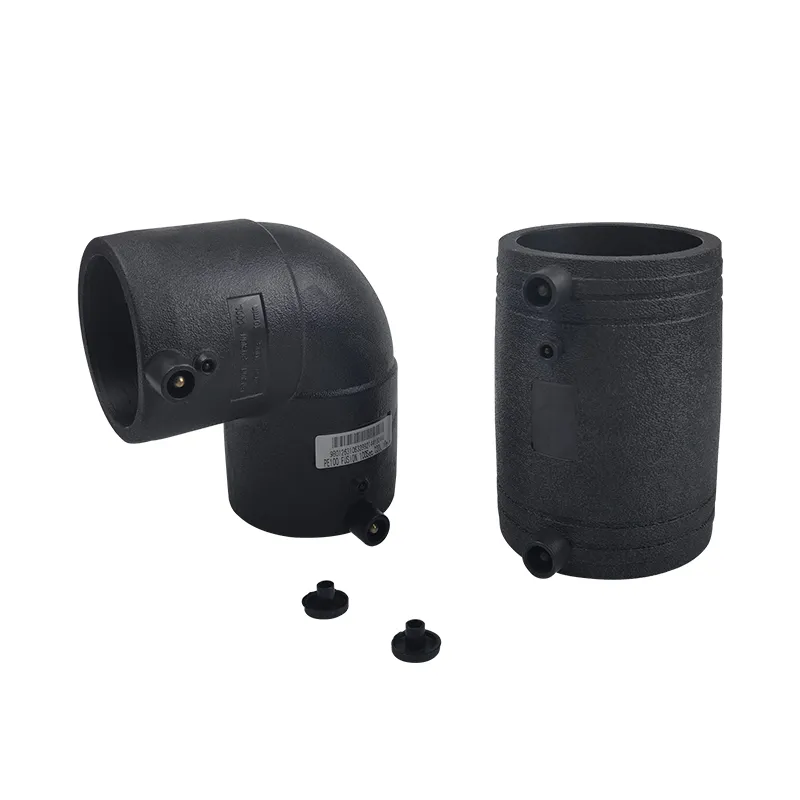High-Density Polyethylene (HDPE) pipe fittings are becoming increasingly popular in plumbing installation due to their superior properties, including durability, chemical resistance, and leak-free connections. HDPE fittings offer several benefits over traditional fittings, such as metal or PVC, and are suitable for a wide range of applications, from residential to commercial and industrial plumbing systems. In this article, we will explore the benefits of using HDPE pipe fittings in plumbing installation, as well as the installation techniques, factors to consider when selecting fittings, and best practices for achieving cost-effective, leak-free, and long-lasting performance.
Which types of HDPE pipe fittings are commonly used for plumbing installation?
HDPE pipe fittings are commonly used in plumbing installation due to their durability and resistance to corrosion. The types of HDPE fittings used can vary depending on the application and specific requirements of the plumbing system. Here are some of the most commonly used types of HDPE pipe fittings for plumbing installation:
1. Couplings: Couplings are used to connect two straight sections of HDPE pipe. They can be used for both pressure and non-pressure applications.
2. Elbows: HDPE elbows are used to change the direction of the flow of the plumbing system. They come in different angles, such as 45° and 90°.
3. Tees: Tees are used to connect three sections of HDPE pipe at a joint. They are commonly used in branch connections.
4. Reducers: HDPE reducers are used to connect HDPE pipes of different sizes. They come in concentric and eccentric types.
5. Flanges: HDPE flanges are used for connecting pipes, valves, and other equipment in plumbing systems. They can also be used for making repairs or modifications to the system.
6. Valves: HDPE valves are used to control the flow of water or other fluids in a plumbing system. They come in various types, including ball valves, butterfly valves, and check valves.
It is important to select the appropriate type of HDPE fitting for your specific plumbing installation to ensure reliable and long-lasting performance.
What are the benefits of using HDPE pipe fittings for plumbing installation compared to other materials?
There are several benefits of using HDPE pipe fittings for plumbing installation compared to other materials. Here are some of the advantages:
1. Durability: HDPE pipe fittings are highly durable and resistant to corrosion, which makes them suitable for use in a wide range of environments and applications.
2. Leak-free joints: HDPE fittings are generally fused together using heat and pressure, which creates a leak-free joint that is stronger than the pipe itself.
3. Lightweight: HDPE pipe fittings are lightweight and flexible, which makes them easy to handle and install, even in tight spaces.
4. Low maintenance: HDPE fittings require minimal maintenance and can last for up to 50 years, which can save money and reduce downtime.
5. Chemical resistance: HDPE pipe fittings are highly resistant to chemicals and other corrosive substances, making them suitable for use in industrial and chemical applications.
6. UV resistance: HDPE pipe fittings are UV-resistant, which makes them suitable for use in outdoor applications without the need for additional protective coatings.
7. Environmentally friendly: HDPE pipe fittings are recyclable and can be reused or repurposed, which reduces waste and supports sustainability.
Overall, HDPE pipe fittings offer a range of benefits for plumbing installations, including strength, durability, flexibility, and resistance to chemicals and other corrosive substances, making them a popular choice in many different applications.
When selecting HDPE pipe fittings for plumbing installation, there are several factors that should be considered to ensure the fittings are suitable for the specific application and requirements of the plumbing system. Here are some factors to consider:
1. Size: The size of the HDPE pipe and fittings should be chosen based on the flow rate, pressure, and specific requirements of the plumbing system.
2. Shape: HDPE fittings come in a variety of shapes, including couplings, elbows, tees, and reducers. The shape chosen will depend on the specific requirements of the system, such as the need to change direction or connect different pipe sizes.
3. Connection method: HDPE pipe fittings can be joined using several techniques, such as butt fusion welding, electrofusion welding, or mechanical joining methods. The connection method chosen should be based on the requirements of the system, including the pipe size, pressure rating, and expected lifespan.
4. Material: HDPE pipe fittings are manufactured from different materials, and the material chosen should be based on the specific requirements of the plumbing system. For example, fittings made from reinforced nylon are suitable for corrosive environments, while those made from stainless steel are suitable for high-pressure applications.
5.Standards: Different countries have different standards for HDPE pipe fittings, such as ASTM, ISO, or EN. It is important to ensure that the fittings selected meet the relevant standards for the specific application.
6. Cost: The cost of HDPE pipe fittings can vary widely based on factors such as size, shape, material, and connection method. It is important to consider the cost of the fittings in relation to the specific requirements of the plumbing system and the long-term performance and maintenance costs.
By considering these factors, it is possible to select the most suitable HDPE pipe fittings for a plumbing system that will provide reliable, leak-free performance over the long term.
Conclusion
In conclusion, HDPE pipe fittings offer a range of benefits for plumbing installation, including durability, leak-free joints, lightweight, low maintenance, chemical and UV resistance, and environmental friendliness. These fittings can be installed using a variety of techniques, such as butt fusion welding, electrofusion welding, or mechanical joining methods. The selection of HDPE pipe fittings for plumbing installation will depend on several factors, such as size, shape, connection method, material, standards, and cost. By considering these factors, it is possible to select the most suitable HDPE pipe fittings to ensure reliable, long-lasting performance and cost-effectiveness for the plumbing system. As with any plumbing installation, proper planning, preparation, and installation techniques are essential for achieving optimal results.









659.webp)
210.webp)
328.webp)

294.webp)
476.webp)


